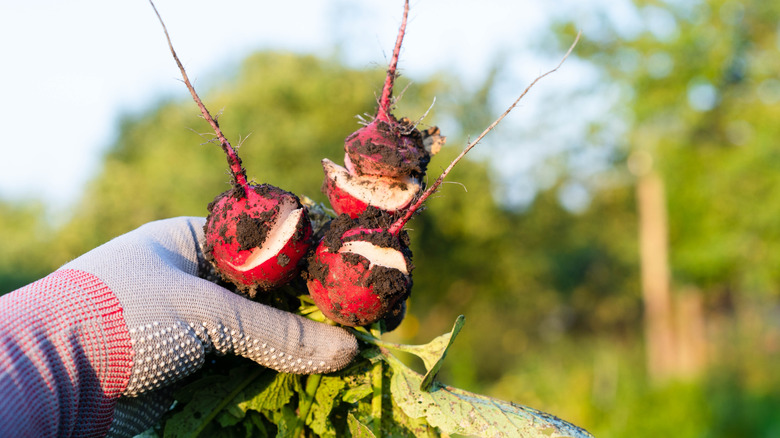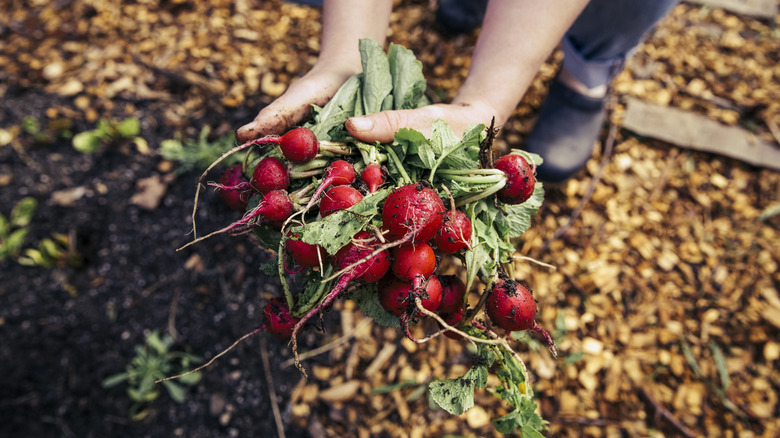The Gardening Tip That Can Keep Your Radishes From Cracking
We may receive a commission on purchases made from links.
As one of the fastest-growing vegetables to plant in your garden, radishes are easy and rewarding to grow. It's disappointing to find them cracked or split at harvest. This common issue can have you thinking twice about growing radishes, but it's usually caused by inconsistent watering and is easily remedied. When radishes grow too quickly after a dry spell or take up water too fast following heavy rain, the internal pressure can build, splitting the skin. You can prevent most cracking with a little planning and enjoy a uniform, crisp harvest.
The key is to keep moisture levels steady from the time the seeds sprout until harvest. Aim for about an inch of water per week, adjusting for rainfall. Rather than letting the soil dry out between waterings, try to water lightly on a consistent schedule. This approach reduces stress on the developing roots and prevents the rapid growth spurts that lead to cracking. Round or globe radishes have shallow roots, which means the top few inches of soil dries out quickly, right at the roots. Raised beds or well-drained soil with a slightly acidic pH of 6 to 7 can make a difference, helping water move evenly through the root zone. In the fall, when night temperatures drop below 45 degrees, radishes can crack after harvest. Gardeners can prevent this by waiting to harvest until midmorning. By then, the roots will have had time to warm up a bit and send some of their moisture up to the leaves, which helps reduce excess water in the roots at harvest.
The best watering strategies for crack-free radishes
To prevent cracking, it's important not only to water consistently but also to water correctly. Radishes grow fast, and uneven moisture can cause them to mature unevenly, leading to both cracks and woody texture. Radishes thrive when they receive even moisture throughout the growing period. Maintaining soil moisture at a uniform level avoids these common disorders. An inexpensive handheld moisture meter can help determine how moist the soil is. Units like this Gouevn Soil Moisture Meter have a probe that's inserted 3 to 5 inches into the soil. The subsequent reading will tell you if your soil is getting enough (or too much) water.
Adding a 3 to 4 inch layer of organic mulch, like shredded leaves or straw, can help retain moisture and reduce fluctuations caused by heat or wind. Moisture tape or drip irrigation is another way to ensure your radishes have the right amount of water. A timer can help provide the consistent watering despite a busy schedule, though be sure to check for overwatering too. That and soil topped with mulch to slow evaporation, your radishes should grow evenly.
Radishes can even be grown in containers. There are plenty of benefits of growing in a container garden, but you do have to be especially mindful: pots dry out faster and may need more frequent watering than planting in the ground or a raised bed. Finally, don't worry too much if a few radishes crack. They might not look as perfect on a salad, but they are more than likely still edible and will taste just as good.

